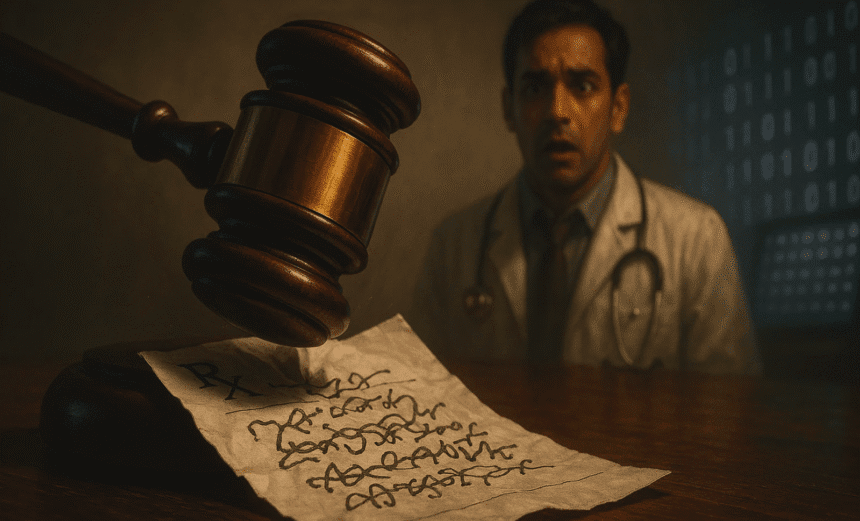Bad handwriting has long been the target of jokes about doctors, but an Indian court has ruled that it is no laughing matter. The Punjab and Haryana High Court found that a legible prescription is a “fundamental right” rather than a courtesy, as fuzzy writing could mean the difference between life and death. Justice Jasgurpreet Singh Puri made the ruling after discovering an unclear medico-legal report that “shook the conscience of the court.”
When Illegibility Becomes Dangerous
The case at hand included severe claims of rape and fraud, but the judge’s attention turned when he came across an unreadable two-page medical report. He described the scribbles as so awful that “not even a word or a letter was legible.” At a time when digital tools are widely available, Justice Puri said it was “shocking” that doctors, particularly at government hospitals, continue to rely on handwritten prescriptions that only a chemist would be able to understand.
The court has now ordered medical schools to incorporate handwriting instruction into the curriculum and set a two-year deadline for digitizing prescriptions. Until then, doctors must write clearly in capital letters to avoid serious confusion.
Doctors Push Back
The Indian Medical Association, which represents over 330,000 doctors, acknowledged the issue but claimed that the situation is not so simple. “In major cities, doctors are already using digital prescriptions,” said Dr. Dilip Bhanushali, IMA president. “But in small towns and rural areas, it’s very difficult.” He said that government hospital doctors are frequently overburdened, seeing up to 70 patients each day, making precise handwriting difficult.
Nonetheless, the IMA has recommended its members to follow the requirements and utilize large, legible fonts. “A doctor who sees seven patients a day can manage it—but for 70, it becomes nearly impossible,” Bhanushali stated.
The Global Toll of Scribbles
This is not the first time Indian courts have identified poor handwriting. Judges from Odisha and Allahabad have already chastised “zigzag writing styles” in medical reports. Globally, poor handwriting has been linked to disastrous effects. According to a 1999 assessment by the United States Institute of Medicine, misread medications cause around 7,000 deaths each year. In one notorious case in Scotland, a woman was prescribed erectile dysfunction cream for a dry eye ailment due to an unclear prescription.
India lacks extensive data on deaths caused by improper handwriting, yet the hazards are substantial. In one documented example, a woman experienced convulsions after being given the incorrect medication because its name sounded similar to another substance scrawled on her prescription.
Calls for Change
Pharmacists in India continue to voice concerns. In Telangana, a public interest petition was launched after a three-year-old child died after an incorrectly administered injection in 2014. The Medical Council of India later required doctors to use capital letters when writing generic names, although enforcement remains weak.
Even today, large drugstore chains confess that they frequently must contact doctors personally to confirm prescriptions. “Sometimes prescriptions border on illegible,” said Ravindra Khandelwal, CEO of Dhanwantary, situated in Kolkata. “We do our best to decode, but mistakes can cost lives.”


















